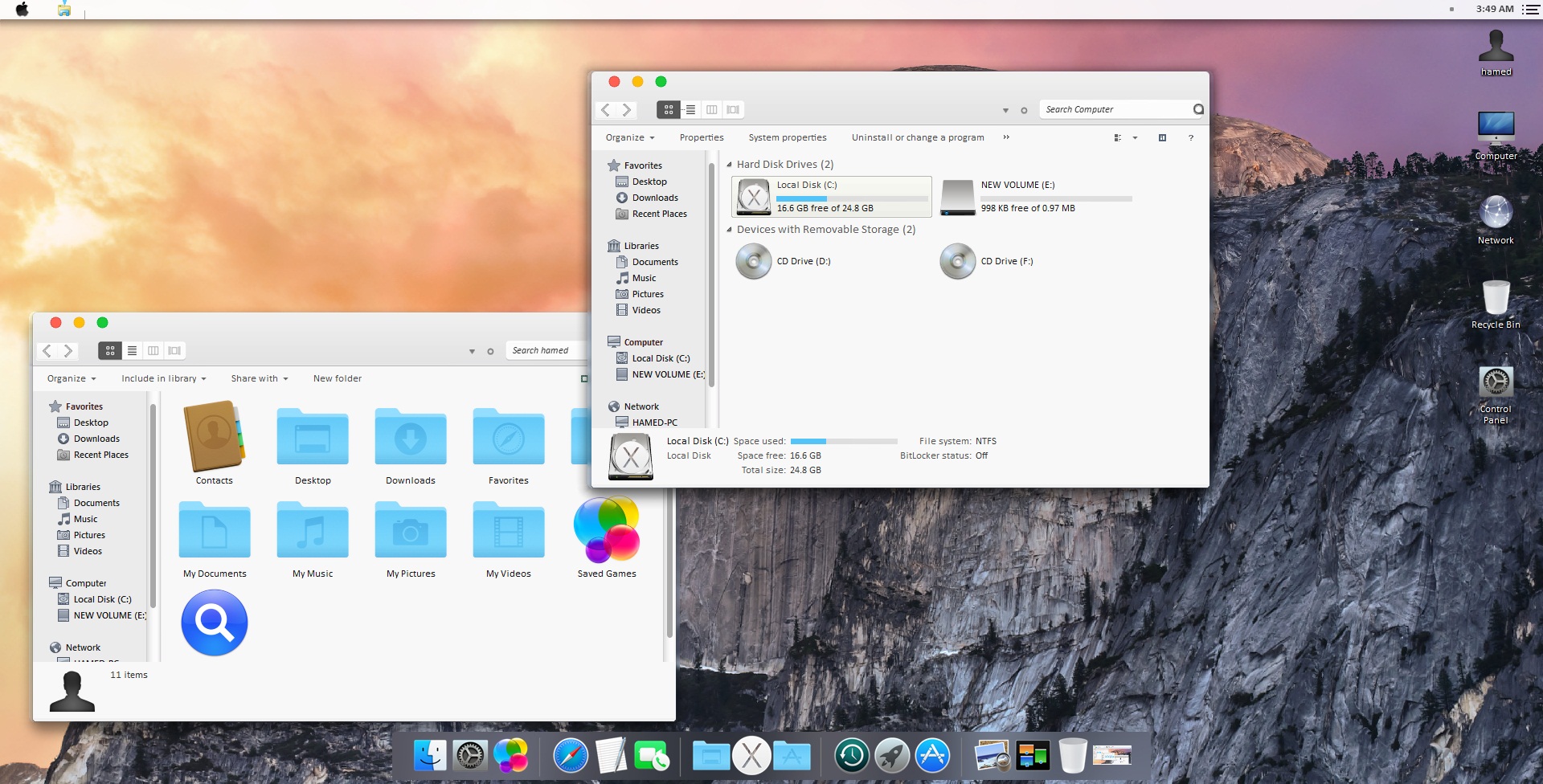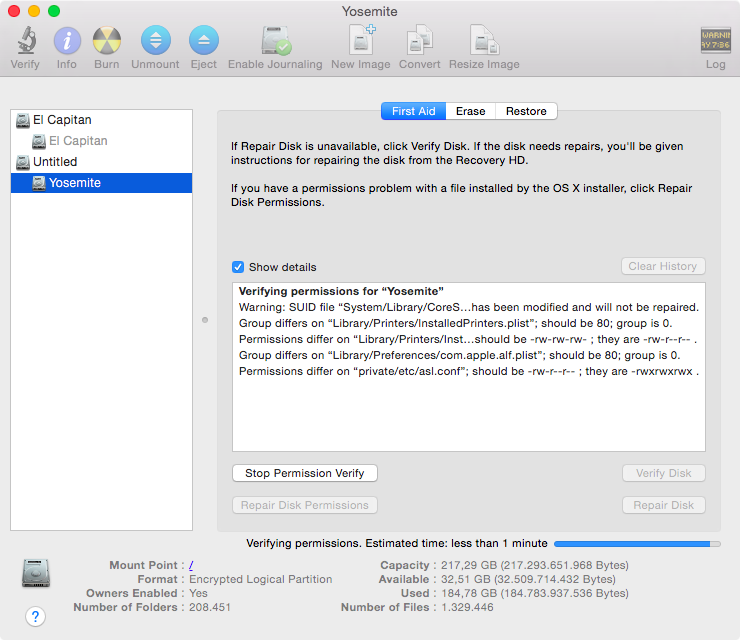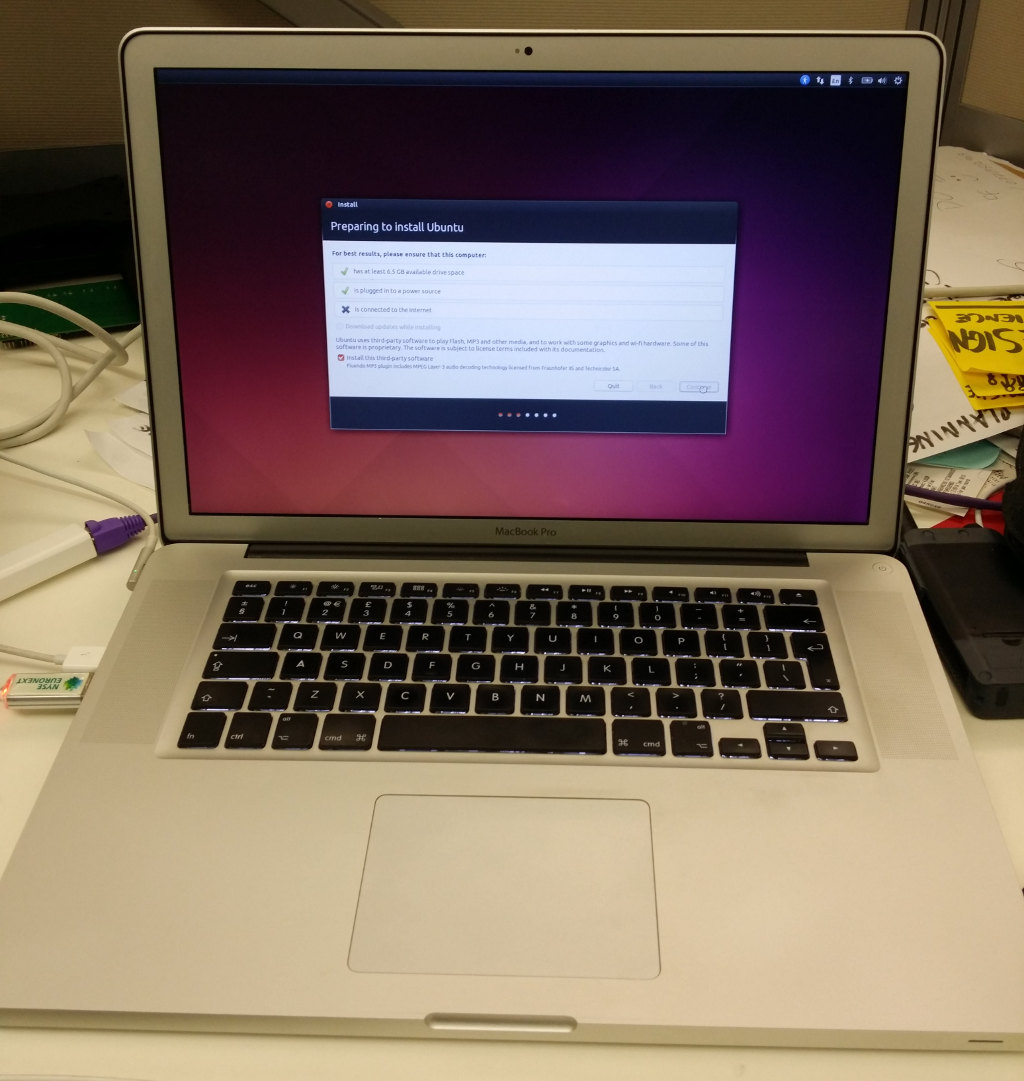Yosemite Install Disk
Step 2: Making the OS X Yosemite Installer Drive. The next step will actually make the installer drive from the previously formatted USB disk. If you already have the OS X Yosemite installer application in the /Applications/ folder on the Mac, you can skip directly to step 3: Download OS X Yosemite from the Mac App Store, it’s free ( direct. Find many great new & used options and get the best deals for Mac OS X 10.10 Yosemite Install Disc at the best online prices at eBay! Free shipping for many products!
OS X 10.10 Yosemite, the much-awaited latest version of OS X Operating System from Apple, was announced and soon made available to public. As soon as the launch of latest Apple desktop OS happened, there were instant comparisons between OS X Mavericks and OS X Yosemite. Macbook users or iMac users can get free download of Apple OS X Yosemite from Mac App Store to check out its various features. In this article, we shall go through useful tips to upgrade to OS X Yosemite from OS X Mavericks as well as ways to clean install Yosemite from scratch after formatting.
OS X 10.10 Yosemite features
This OS has got a look that resembles the iOS design. The OS font (typeface) has been upgraded to Helvetica Neue from Lucida Grande. It is accompanied with an enhanced notification center containing two categories: one for notifications and one for Today’s view consisting of reminders, upcoming events, current weather conditions, etc.
The revamped Mail app with additions like Mail Drop (to send email attachments larger than 5 GB over cloud) as well as Markup (for image and document annotation) is pure delight for Mac users. Add to it, the pleasantly redesigned dock and this OS doesn’t stop impressing with its design. Moreover, there has been some innovation with regards to continuity feature “Handoff” to carry on with an incomplete task (that was started on iOS device) and complete it on a Mac or vice versa.
System requirements for upgrading to Yosemite OS

1. Already running OS X 10.6.8 Snow Leopard
2. 2 GB RAM and 8 GM storage space
3. Compatibility for running OS X Mavericks
4. Support for Bluetooh 4.0 LE; especially to use Handoff feature
How to upgrade Mac to OS X 10.10 Yosemite?
Visit the Mac App Store – Free Download of OS X Yosemite for Mac.
Continue with the free upgrade by clicking the relevant OS X option. Once the 5.16 GB file is downloaded, it would trigger the launch of OS X Yosemite Installer. Carry out the installation on your chosen hard drive after agreeing to the Apple terms & conditions.
How to full install OS X Yosemite from scratch after formatting your Mac?
1. Make sure that OS X bootable installer drive (USB disk) is kept ready.
2. From the old Mac OS, take backup of all your important content using Time Machine or some external drive.
3.Get your Mac connected to the bootable installer drive for rebooting.
4. Navigate to the boot selection menu using “Option” key. From the menu, choose the option “Install OS X Yosemite” for USB installer. The window “OS X Utilities” opens up, from which you need to first select the “Disk Utility” option for data erase (i.e. fourth option from the Utilities window image as seen below).

5. Select the hard drive (partition) where you want to carry out complete Yosemite download and then click “Erase” tab.
6. In the format field of the Erase tab, enter the entry “Mac OS Extended (Journaled)” from the drop-down list.
7. In the name field of the Erase tab, give a suitable descriptive name for the hard disk. Click on the “Erase” option to format the drive and all its contents.

This marks the end of formatting process and you can come back to the OS X Utilities window. Select the option “Install OS X” for downloading new copy of Yosemite. Agree to the terms & conditions and continue the fresh download of OS X on the chosen destination drive.
Yosemite Install Usb
Now you have a clean version of OS X Yosemite on your Mac with no preferred apps or content carried forward. On this OS, you can now get your backup files and install your choice of apps.
I have tried to share useful tips related to different ways of upgrading or downloading the latest Mac OS X. I hope you would find this useful while carrying out the relevant complete download OS X 10.10 Yosemite. Please feel free to ask Yosemite installation queries or share your experience!
The last time Apple released a new version of its OS X operating system on physical media was 2009, in the case of OS X 10.6 Snow Leopard. Since then, new OS X versions are only available for download directly from the Mac App Store.
Install Yosemite Dmg
DiskMaker X is a lightweight and very easy-to-use macOS utility specially made to help you create a bootable drive from macOS installer packages, with support for the last three macOS releases. DiskMaker X is a practical tool developed with AppleScript that lets you copy an install file for the OS X Yosemite operating system to a USB drive so you can turn it into a boot disk during startup. To make the copy, you just have to install the DiskMaker X application on your computer, download a copy of Yosemite, and follow the assistant's. How to create a macOS Catalina installer using DiskMaker X.In order to create this you will need to be running macOS Mojave.i'm not sure if you can create th. Once you have downloaded the Install macOS Sierra and DiskMaker X 6, add both of them to an application. Add DiskMaker X 6 to Application Create Bootable USB for Mac on Windows 10. Go ahead and launch the DiskMaker X 6, after that select a Version of operating systems like Yosemite, El Captain or MacOS Sierra. Since macOS High Sierra is.
While this may be a convenient way to upgrade your Mac, it doesn’t leave you with a fallback solution as there is no bootable USB for you to do a clean install (in case your Mac gets corrupted).
Keep the Installer From Being Deleted Automatically
Similar to previous OS X versions, when you download Yosemite from the Mac App Store, it’ll automatically be downloaded to your Applications folder. And if you leave it there, the installer will delete itself after Yosemite finishes installing on your Mac.
Mac app store for developer. So, if you plan to use the same installer file on different Macs in the future, or as in this case, you plan on creating a bootable drive, be sure to copy the installer to another location, such as an external drive, before you install Yosemite.
Now there are two different methods to create a bootable USB drive for Yosemite. You can either use a simple graphical interface, or you can use OS X’s built-in Terminal utility. We’ve described both methods below.
Before you get started, make sure you have the following stuff with you:
- An 8GB or larger USB drive or external hard drive (this can be a partition on a larger drive as well)
- The OS X Yosemite installer – this should be ideally placed inside your Applications folder.
- DiskMaker X for your Mac – you can download it from here
Using Diskmaker
1. Once you have Diskmaker downloaded, connect your USB to your Mac and open up DiskMaker X.
2. You’ll be presented with options to make installers for either OS X 10.8, 10.9 or 10.10. Click on OS X Yosemite (10.10).
3. Diskmaker should automatically search your system for the OS X 10.10 Installer and should present the file with its location to you. If this is the right installer, click on “Use this copy.”
If it doesn’t detect the installer, click on “Use Another Copy” to navigate to the installer you want to use. Once located, click on Done.
4. Diskmaker will then ask you to select the drive you want to use as a Yosemite bootable drive. Once you select it, it will proceed to format the drive/partition and create a bootable disk. Depending on your Mac and USB type, this process can take from two to thirty minutes. It took around sixteen minutes to create a bootable disk on my USB 2.0 drive on my iMac (Mid-2012).
Once DiskMaker is finished, you’ll have a bootable Yosemite installation drive.
And that’s it! You can now use this bootable drive to easily install Yosemite onto multiple computers, or you can use it as a recovery drive for use in the future.
Using Terminal
If the above method didn’t work for you for some reason, you can easily create a bootable USB using Terminal. Here’s how:
1. Connect your USB to your Mac, and open Disk Utility on your Mac.
2. Select the drive from the left-hand pane and click on the Erase tab.
Note: This step will erase all data on the USB/drive, so be sure to backup any valuable data you have on your drive.
3. Select “Mac OS Extended (Journaled)” from the Format menu, enter “Untitled” in the Name field and click on “Erase”.
4. Make sure your Yosemite install file is located in the main Applications folder (/Applications) before proceeding.

Open Terminal on your OS X system using Spotlight or by navigating to “Applications -> Utilities.”
Diskmaker Mac Yosemite
5. Copy and paste the following command into Terminal and press Enter.
6. When prompted, enter in your admin password and press Enter.
7. Terminal will now start creating the bootable drive and will display the progress as shown below:
The entire process will be complete when you see “Done.”
You now have a bootable Yosemite drive which you can use to install Yosemite on other systems. You can also use this bootable drive to do a fresh, clean installation of Yosemite.
Republished with permission from MakeTechEasier. Read the original.
Diskmaker For Macos Yosemite
Diskmaker For Mac Yosemite High Sierra
- Joined
- Sep 12, 2014
- Messages
- 163
- Reaction score
- 0
- Points
- 16
Diskmaker For Mac Yosemite 10.10
What does that mean? The flash drive is 16 GB. It shows as Yosemite Installer on the Desktop. Could the flash drive be defective? When I click on it & click on 'get info', it shows that it is formatted as OS X journaled. Is it possible to run a diagnostic on the flash drive?
I'm anxious to do a clean install of Yosemite on my MacBook Pro & my mini.